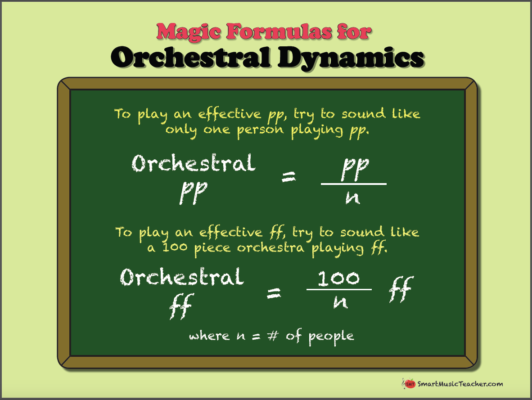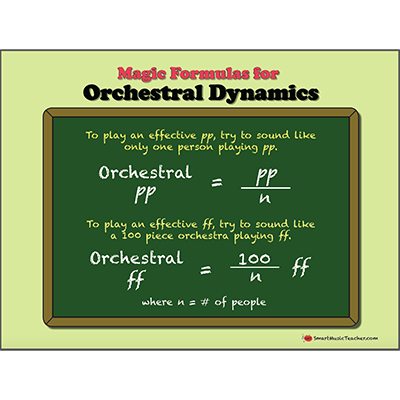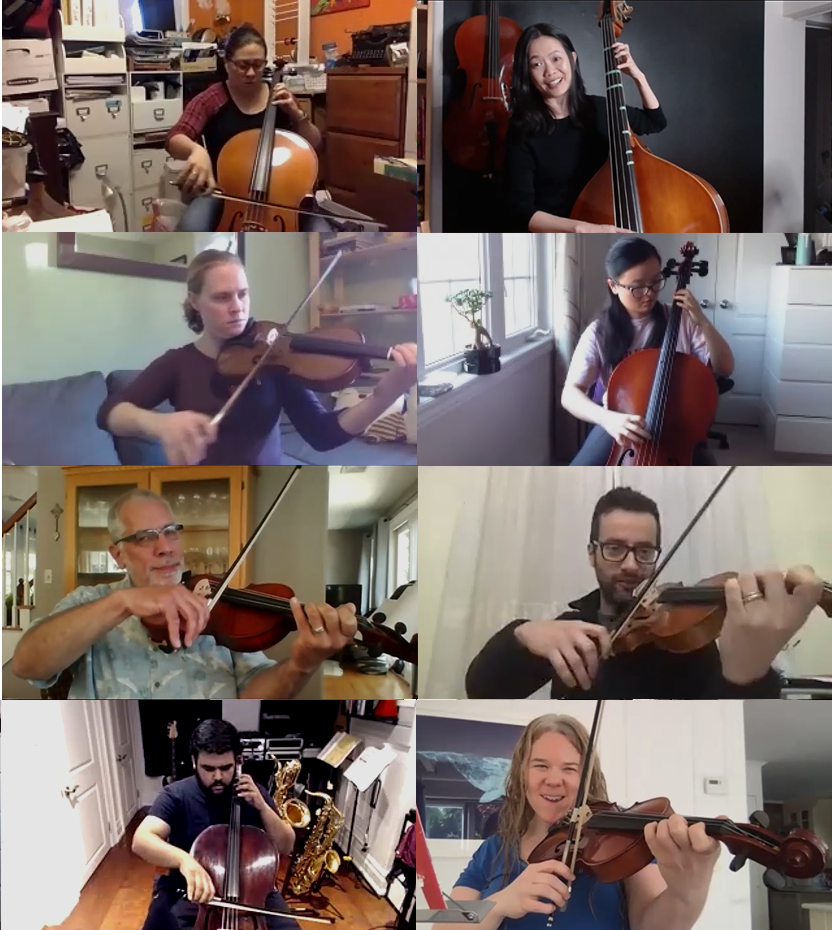Have trouble getting your groups to play dynamics effectively? Use these magic formulas and you will get instant results! Read more about teaching dynamics below. Meanwhile, purchase this poster for your music classroom!
- Posters are in high quality PDF format and can be sent to your local copy shop for printing.
- Includes one 18″x24″ poster.
This is a downloadable product. You will need a PDF reader such as Adobe Reader to read and print.
IMPORTANT: All copies will be personalized with the owner’s name. Upon checkout, please enter the name you want to appear on all copies.
What do I need to know about the SMT Copyright & License Agreement before purchasing?
Add to Cart $10.00
Teaching effective dynamics should be easy
Do you struggle to teach your students to play dynamics effectively? We are constantly reminding our students to play quieter or louder, but often they cannot do it because:
- they cannot hear specifically what it is that you want.
- they are only thinking about their own individual dynamic, not the overall dynamic of the group.
Read on to see how you can make teaching dynamics easy and effective for your students at any level.
How to get your students to play quietly….
In order to play an effective piano, the entire group should strive to sound like one person playing piano. Otherwise, everyone’s individual piano will add up to a mezzo forte. Therefore, if you have 30 students in your group, every student should strive to be 1/30 of a piano so that they will add up to be one person playing piano.
Explaining this to your students helps them realize how softly they have to play, and helps those loud players realize how much they have to tone it down.
How to get your students to play loud enough…
In order to play an effective forte, the entire group should strive to sound like a 100-piece orchestra playing forte. Therefore, if the group consists of 30 people, each person should strive to sound like at least 3 people playing forte in order to add up to a 100-piece orchestra.
Explaining loud dynamics in this way is very effective because it gives students permission to go out of their comfort zone to play loudly on their instrument when they otherwise wouldn’t. They also find it fun as they struggle to sound like more than one person.
The formulas were born!
One day, I was reminding one of my classes of this lesson when one of the viola students was inspired to run up to the chalkboard. He surprised us by scrawling out a mathematical formula. It took us a moment to understand what he did, and then we all laughed. The formulas for orchestral dynamics were born!
Teaching dynamics in this way solves our two problems:
- It gives students something tangible to visualize and strive for.
- It makes students aware of their contribution to the overall effectiveness of the group.
Describing dynamics in this way really gets the point across to students, and can give pretty dramatic results. It’s also very effective in getting small groups to expand their dynamic range. In fact, the first time I used this technique, I had a class of only 18 students. I remember taking this small group to a festival and, to my delight, they were complimented specifically on how expressive they were and on the effectiveness of their dynamics. It works!
Teach effective dynamics early on.
Finally, teachers often find themselves putting off teaching effective dynamics because they believe they don’t have time, or that the students aren’t skilled enough to be effective at it, or it is one of the last things they tackle. However, teaching students how to play dynamics effectively early on can be a very easy way to make your groups, beginner and beyond, sound really good really fast! It also it gets students thinking about musical expression right away, and makes the music much more interesting to play and more rewarding for you to teach.
Give it a try and let me know how it goes!




